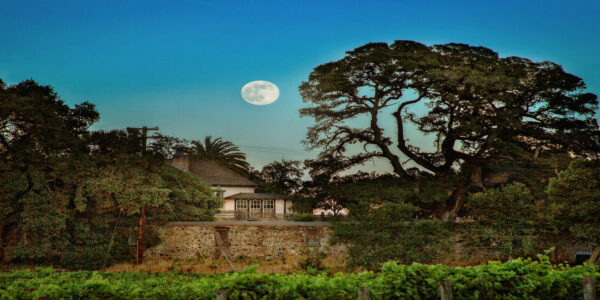
Everything You Need to Know About Watering Your Native Plants This Summer
Heads up—for some, it might not be much at all.
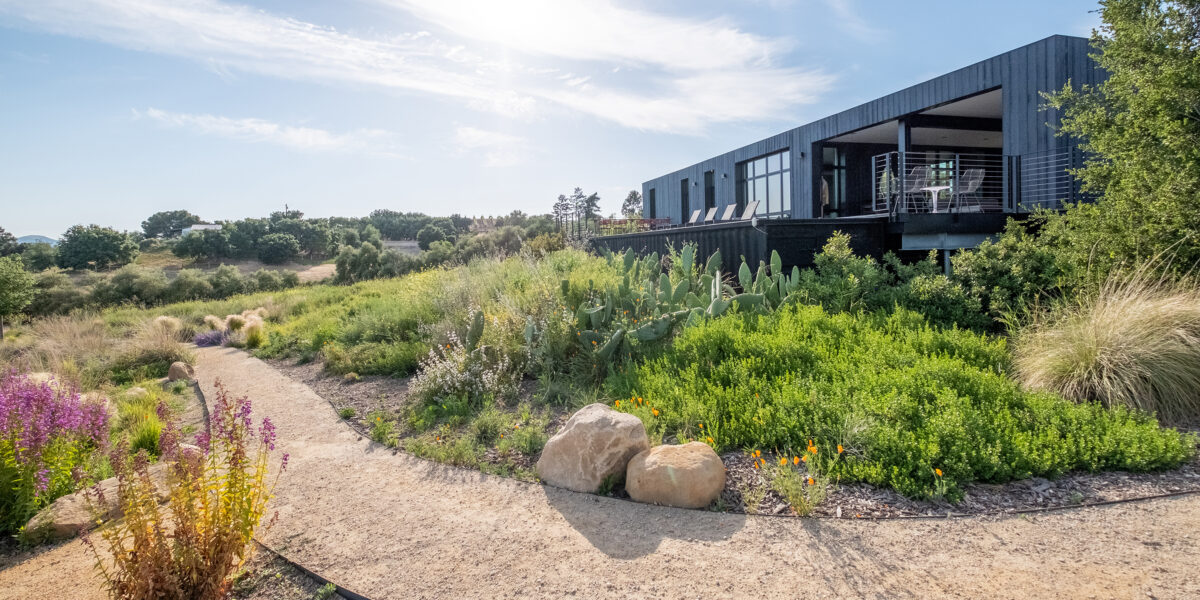
Thomas J. Story
Let’s face it, native plants can feel a little bit like an investment. Not only in terms of your landscaping budget, but also as in an emotional rollercoaster—because I’m sure, like me, you’ve had a little wave of anxiety pass after planting, hoping all the appropriate steps were taken to keep them alive. So this past spring, with my newly installed native hillside habitat going gangbusters from winter rain, I enrolled in an irrigation workshop hosted by The Theodore Payne Foundation, with hopes of fine-tuning my horticultural know-how on proper summer hydration.
Thankfully Horticultural Director Tim Becker was leading the session—he not only cleared up a lot of questions, but made the entire subject of irrigation downright enjoyable. With late summer hitting peak temps, Tim was the first person I wanted on the hotline as we head into some of the hottest weeks of the season. Read on if you need to put a little pep back into your native plants.
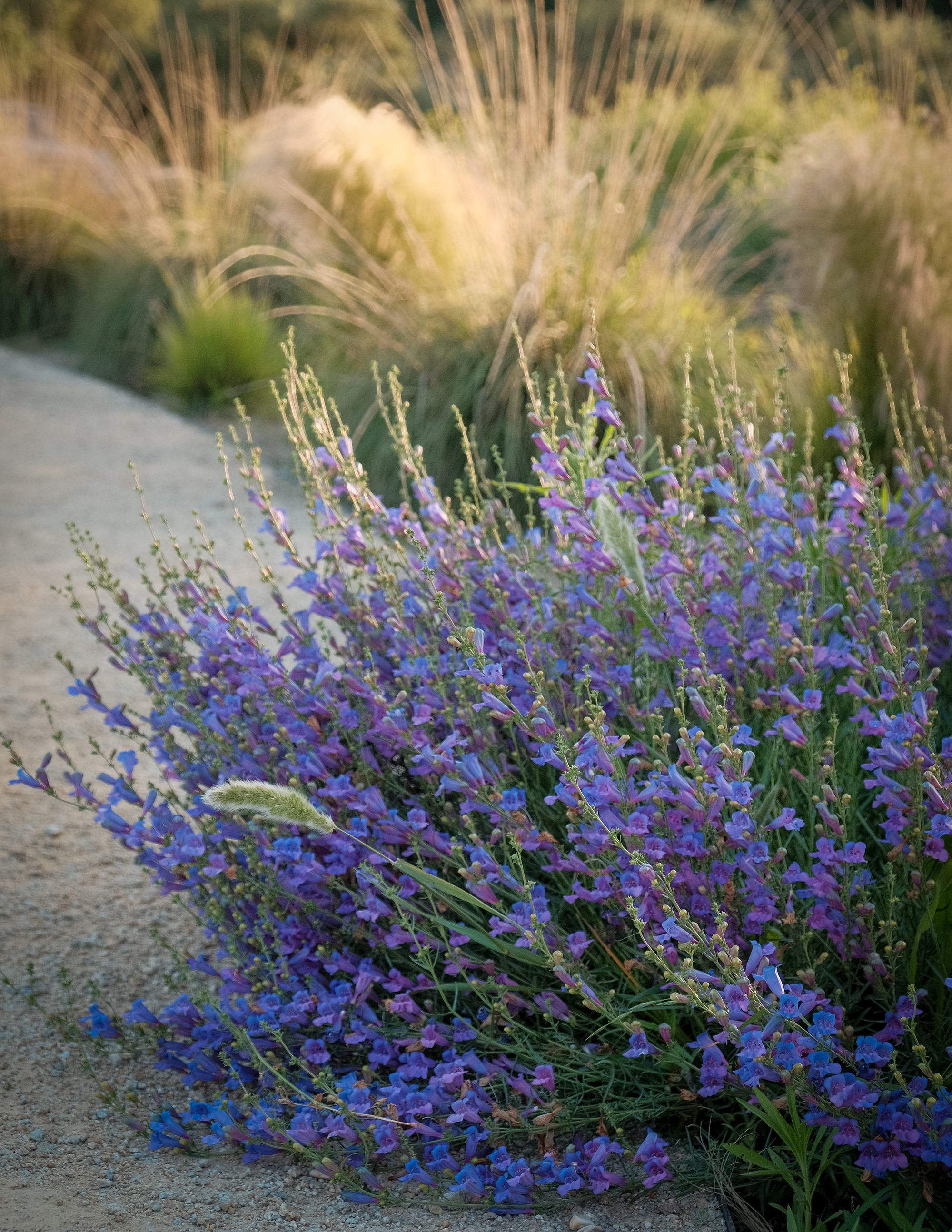
Thomas J. Story
3 Tips for Watering Native Plants in the Summer
The most important step when it comes to keeping your native plants alive is selecting the appropriate varieties for your location. Southwest deserts have far different conditions from the misty coasts of the Pacific Northwest, so don’t try to force a plant to live in an environment it wasn’t intended for. Tim advises, “If you are planting plants from your natural habitat (such as local natives—California sagebrush, California buckwheat, sugarbush, laurel sumac, and coast live oak), after establishment you can go virtually completely dry in the summer. It’s what these species are adapted to and can tolerate.”
Localized plants aside, there are still some key things to keep in mind when the hot months roll through; here Tim gives us his top three rules for summer watering.
1. Water infrequently and deeply.
Many landscapes are installed with the irrigation timer set to go off three times a week for a few minutes. This is the opposite of what natives want. The roots that absorb water are in the upper 1-2 feet of soil, which means you need to apply 1-2 inches approximately once a week (quick garden math: That’s around 1-1.5 gallons per square foot of garden space).
2. “Flagging at night, it’s all right. Flagging in the morning, gardeners’ warning.”
Flagging is a term used to describe plants that are drooping—basically they can’t replace water as fast as they are losing it. This can happen when there is moisture in the soil but the relative humidity is low and temperatures are hot (peak afternoon conditions in Southern California). So waiting until the morning to see if turgidity (plants full of liquid) returns is a good choice for plants looking droopy at the end of the day. If the plants are still flagging in the morning, it’s a good idea to water them.
3. Trust the soil test.
During the first three to six months of establishment you should be checking soil moisture in the upper 3-4 inches of the original root ball of the plant. If it is dry in the upper 3-4 inches it is time to water.
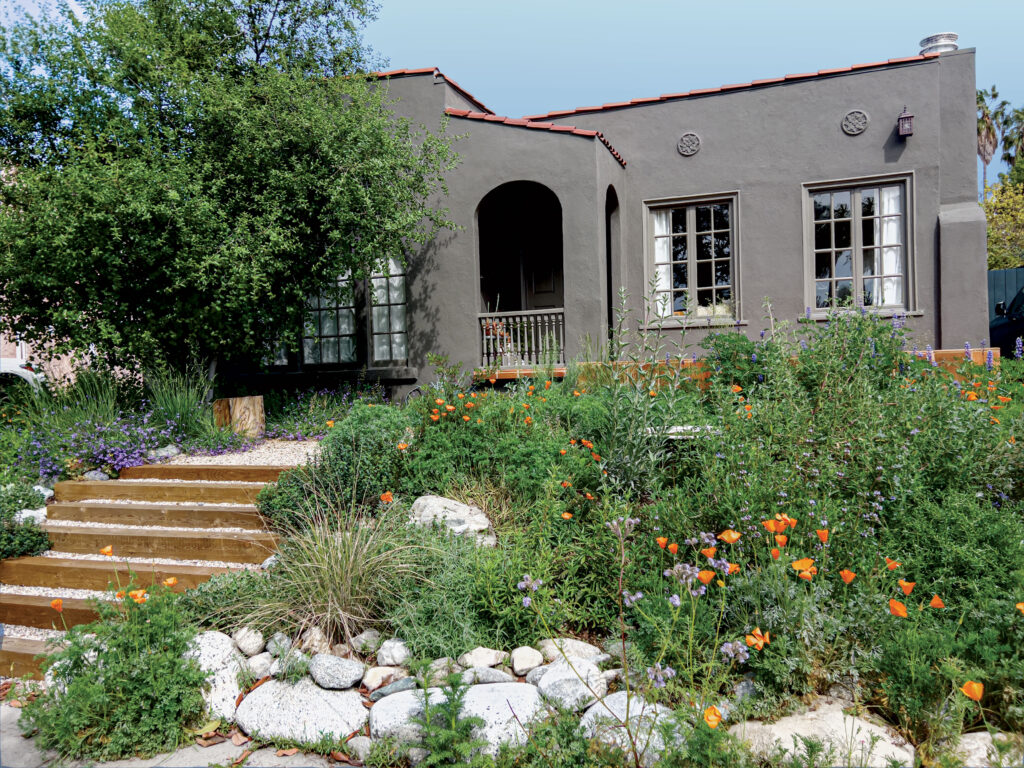
Hugh Garvey
What About Drip Irrigation?
A fan of hand watering, Tim admits, “While drip is great if installed correctly and properly timed, hand watering has a lot of allure to me. In the first place, it brings the gardener into the garden. Having to actually feel and measure the soil moisture, evaluate the plants and soil, and then make the decision to water will make you a better gardener who is more in tune with the hydrologic cycles in your garden.”
Swales are also an incredible way to apply moisture slowly and deeply into the soil. Tim advises to dig little berms around the plants and then create a mobile drip can by using a 5 gallon container or bucket. Simply drill some small holes at the bottom about 3/16 inches wide, insert some 1/4-inch tubing into those holes, and fill the bucket to water, allowing it to empty slowly into your swale basins.
Heed Extreme Weather Warnings
Heat wave in the forecast? Tim suggests, “It’s always a good idea to water a few days ahead of it, and with some more thirsty plants right after. It’s not ideal to water during an actual heat wave because that heat plus water can cause leaf burn or root rot at the crown of plants.” Surprisingly, autumn winds can be more dangerous than a heat dome, Tim adds, which can deplete even more water from the plant and soil. So keep an eye on those Santa Ana dry winds as well and adjust watering accordingly.
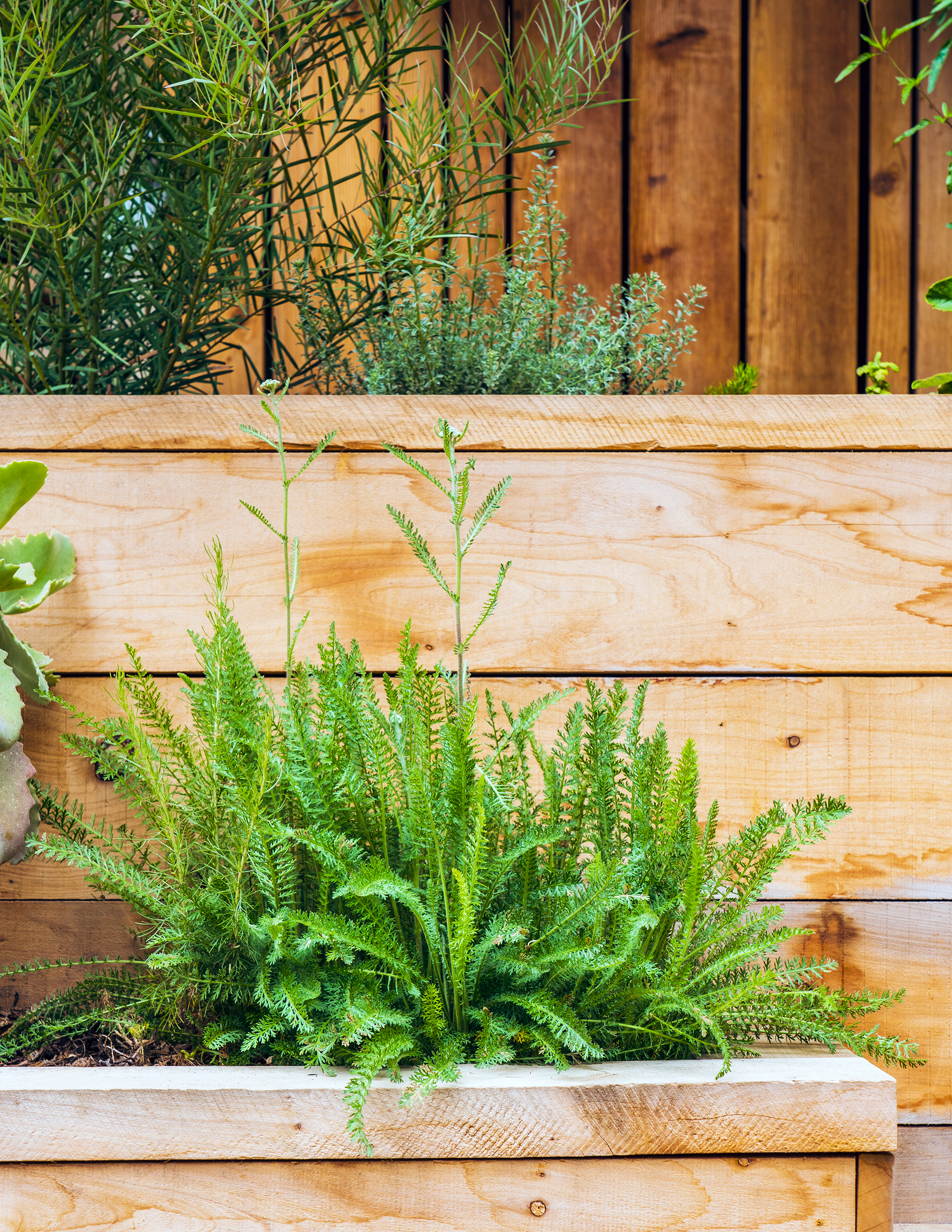
Thomas J. Story
What to Do If Your Plants Need Recovery
Traveling? Unexpected weather event? Broken drip lines or you just plain ol’ forgot to water? Don’t stress!
“If your plant went through a heat wave and is a little crispy on the other side, giving it some post stress water won’t hurt, but don’t go too overboard,” Tim says. “What you don’t want is a lot of soft supple growth in the summer months outside of the establishment phase. Soft supple growth needs more frequent water to stay happy and you may end up needing to water more in the long run.”
No mulch? This time of year is a great time to put some down to help retain soil moisture and keep soil temps down. Most importantly, Tim encourages us to, “make sure that you are planting plants that are appropriate for your soil conditions, remember: right plant, right place! Most problems can be avoided by planting species that are well suited to the naturally occurring conditions in your garden in the first place.”
Even better? Autumn (aka: native planting season) is just around the corner! So now is the perfect time to start planning your next native additions with confidence.
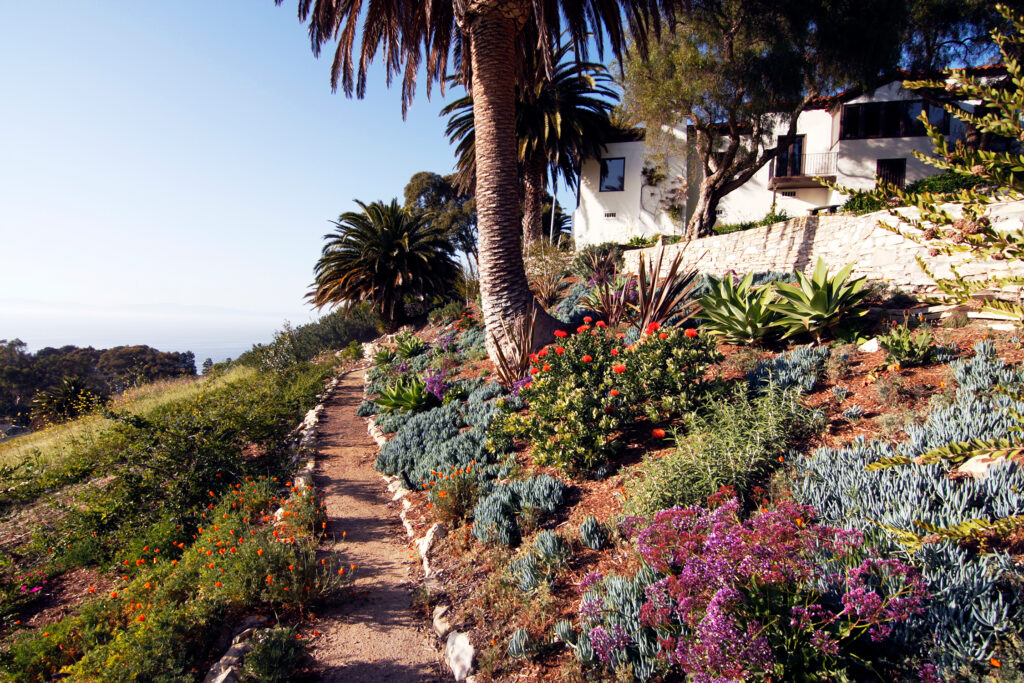
GreenPimp/Getty Images
But, Don’t Water These Native Plants
Almost all plants will need some summer water during their first year of establishment, but after being established, some species truly want the tough love through the summer. Here Tim lists four plants you don’t want to water in the summer months:
Wooly Blue Curls (Trichostema lanatum)
This is an aromatic shrub in the mint family that gardeners adore, but tend to kill. The issue with this and many other water-sensitive species is that they tend to go summer deciduous, and without any leaves to transpire water, they can be harmed by excessive soil moisture.
California Lilac (Ceanothus sps.)
These can look like they are thirsty with their seasonal early summer leaf drop, but try to avoid frequent summer watering with these plants as much as possible.
Flannel Bush (Fremontadendron californcum)
This is a glorious huge shrub with brilliant yellow flowers that is a bit tricky to establish, and once it is can survive on little to no summer water. One of the main issues with this plant is that it prefers granitic, very coarse soil. By planting it in rich loam or clay, a gardener is taking it outside of its comfort zone and will often kill it due to over watering.
Native Dudleyas
These can get really bad leaf burn in the summer from watering and my opinion is that their natural dried out look in the summer is something to strive for.
